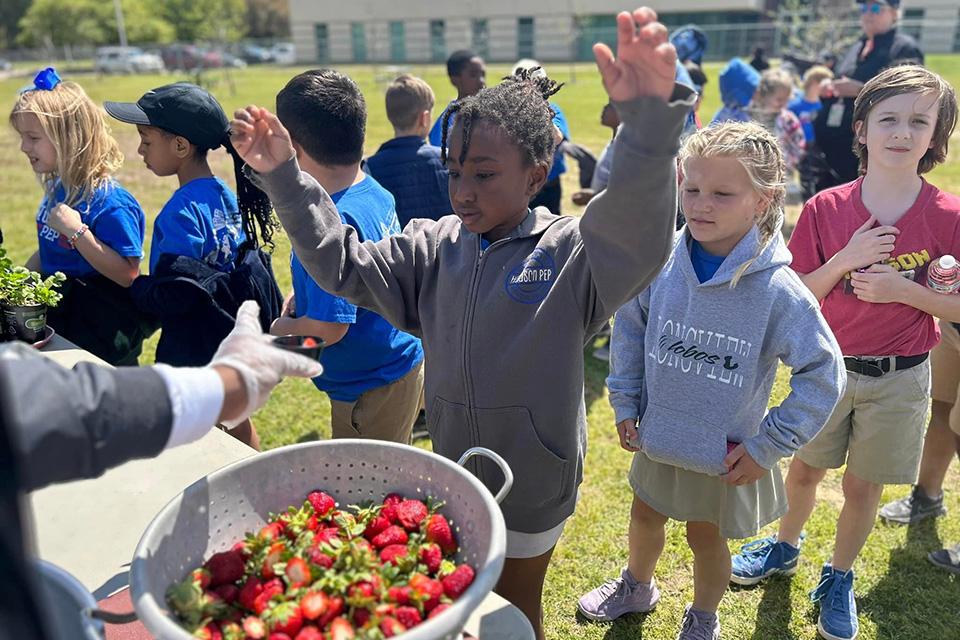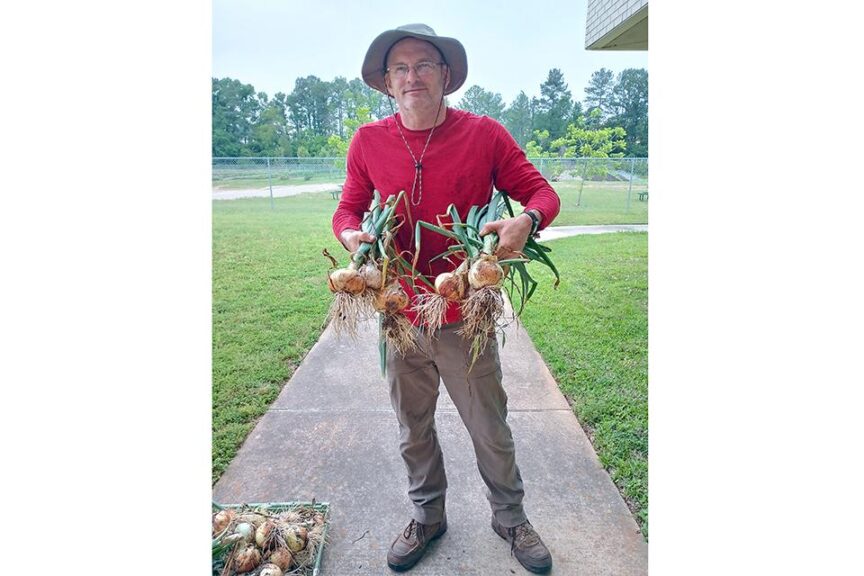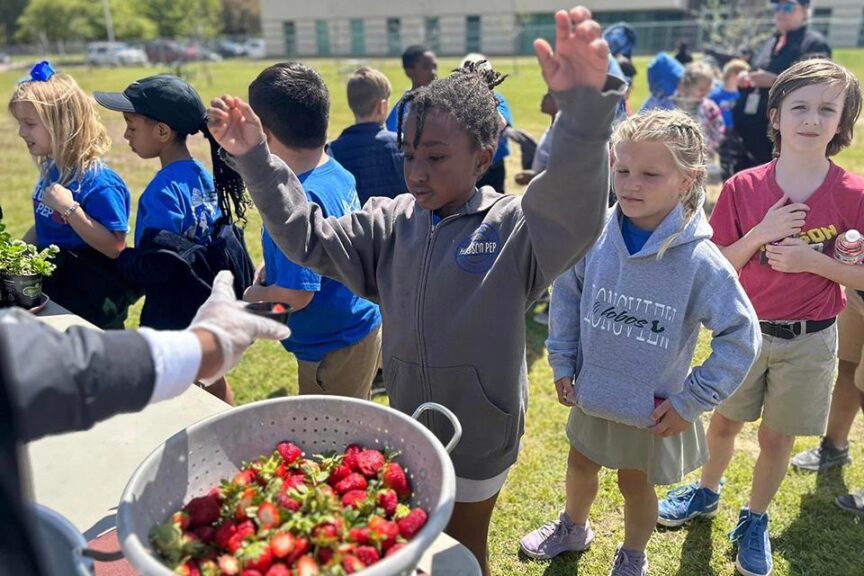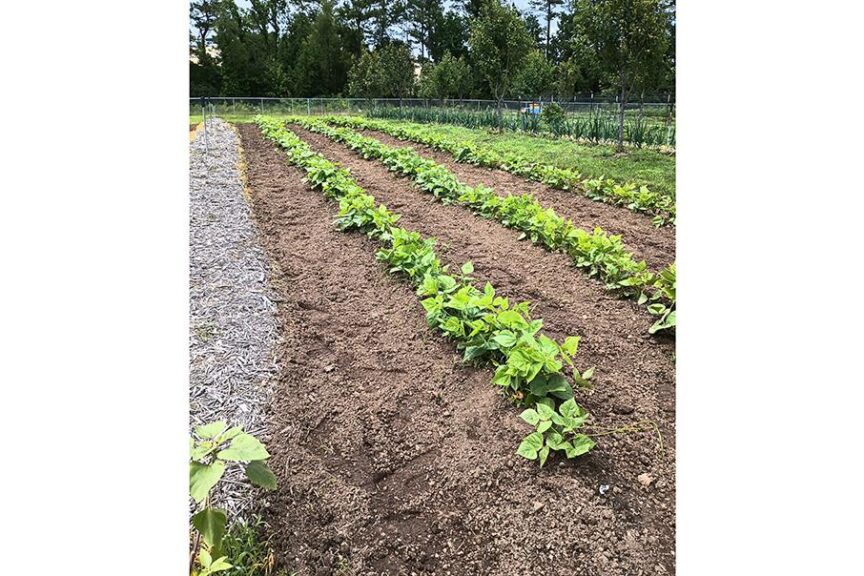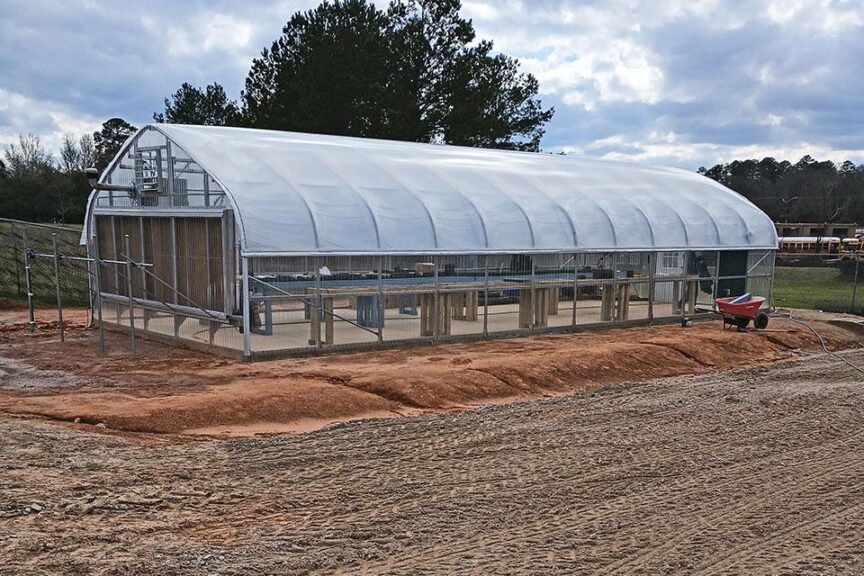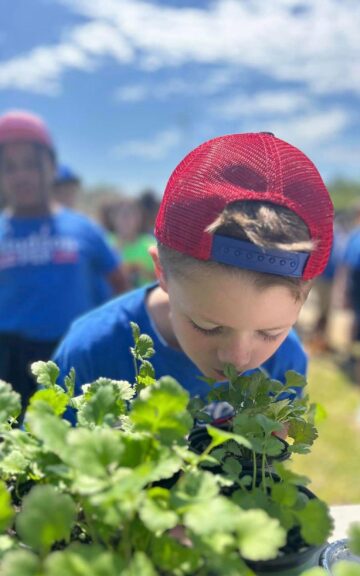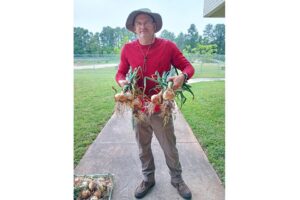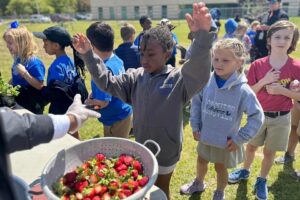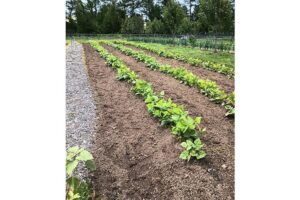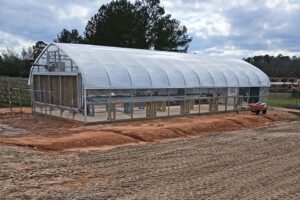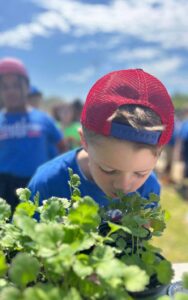Farm to School Program Grows Big in the Heart of Texas
Where a Texas legend once ran, turnip greens now grow. So, too, do a lot of other vegetables — 5 tons worth last season — on 5 acres of land behind the administration building of the Longview (TX) Independent School District.
Not since hall of fame running back Earl Campbell — the “Tyler Rose” — scored touchdowns for nearby John Tyler High School, the University of Texas, and the Houston Oilers has a backfield generated as much local production and excitement as does this back field.
“The garden itself used to be a practice football field in the ‘70s,” James Beasley, the grower of all those vegetables and some berries, says. “The story that I’ve heard — and, of course, this is third-party information — is that Earl Campbell used to come over here from Tyler for scrimmages against Longview.”
This being the Lone Star State, the name dropping does not end with a giant like Campbell. “George Foreman, in Texas terms, he’s my neighbor,” Beasley adds. “OK, he lives 4 miles from where I live. You’ve got to remember how big Texas is. There are a lot of famous people who live and hang out in this area. There’s a lot of history around here.”
One-of-a-Kind Farm
These days the history makers are the Longview ISD and its Farm to Table Coordinator. Hired by the district in September of 2022, Beasley oversees what the Texas Dept. of Agriculture considers to be the state’s only school-operated Farm to Table program of this type.
“We are the only district in Texas that does it to this scale,” Beasley, 54, says. “There are other districts that will maybe plant a row or two of corn or something but not to the scale that we’re doing.”
Beasley’s first two growing seasons have been eventful. The garden, which opened in 2020, has expanded from 3 acres to 5. Last year the school built a 20-by-40-foot greenhouse on the same property, which now includes a tractor shed, compost bins, an air-conditioned office, and, in the middle of the garden, several beehives.
“He is the real deal,” Diana Frachiseur, a Sales Representative with Tyler-based Texas Organic Soil, says of Beasley, a retired Construction Engineer Supervisor with the U.S. Army Corps of Engineers.
Speaking of genuine deals, the program’s cost savings jump off the Longview ledger. Last season had the district gone to the grocery store to buy what it instead grew, it would have spent $30,305, according to Beasley.
“By growing what we grew last year, we saved the district that much money,” he says.
It has been that way since the initial month of Beasley’s tenure. In October 2022, after taking his first 29 days to prepare the 5 acres (which were comprised of overgrown weeds from one end to the other), Beasley purchased 4 pounds of turnip green seeds for $12 and turned it into just under a thousand pounds of product.
Last spring Beasley and his two-man staff were asked by the administration to grow strawberries. Normally, a grower will have to order such plants in June if he or she wants to plant in October.
“Well, I got a hold of a guy in California from Crown Nursery, and he said, ‘I’ll tell you what: We’ll just donate every strawberry plant you need. So, they gave us 1,800 strawberry plants,” Beasley says. “We planted those last October, and we produced a thousand-and-one pounds of strawberries.”
If nothing else transpired, turning such profits would make Longview’s Farm to Table program an undisputed success. But ROI is not the district’s primary impetus — unless that investment happens to be the 8,500 students (K-12) across its 13 campuses.
Growing Tomorrow’s Farmers
Quoting Longview ISD Superintendent James Wilcox, creator of the district’s Farm to Table program, Beasley says saving money, while integral, is not the No. 1 goal of the garden. The main mission is to teach the younger generation how to grow its own produce.
“The primary goal is educating the students; the secondary goal is to save the district money,” Beasley says.
Each of the district’s three middle schools maintains a smaller greenhouse and raised beds. Those students get to see how vegetable production works while incorporating those experiences into their science programs. Meanwhile, all students from the third grade up attend field trips to the main garden and greenhouse to “see the bigger picture,” Beasley says.
“When you ask a third grader, ‘Where do you get your food from?’ they say, ‘Grocery store,’ because that’s all they know,” Beasley says. “It’s neat to see the connections they make when they come out here. They’ll say things like, ‘Oh, so the strawberries I’ve seen in the in the grocery store came from a garden.’ We’re, like, ‘Yes, you’re absolutely right. Somebody had to grow what you’re eating at home.’”
Some students thrive in the garden. One such junior, Ellie, would make her superintendent proud. Last summer she and several classmates worked in the garden for $15 an hour — not that she needed the monetary incentive.
“She was so motivated that we had to tell her, ‘Ellie, it’s time to drink some water,’ and ‘Ellie, you’ve missed your lunchtime. Go eat,’” Beasley says. “She really enjoyed being out here. To quote her, she said, ‘I just like having my fingers in the dirt.’ She’s definitely going to end up going to Texas A&M for ag science.”
Follow the Leader
As interested as Ellie is in her school’s Farm to Table program, so, too, are an increasing number of districts across Texas. That is bound to happen when word spreads about a school’s 5-acre farm increasing its annual production from 4,800 pounds of produce to 10,870 pounds to a projected goal of 20,000 pounds this season.
The biggest question that most districts have — “you might even call it a fear,” Beasley says — centers on front-end logistics, such as land and equipment, both of which Longview already had in hand when it started its program.
“Those are the things that make districts go, ‘Well, is it worth it?’” he adds.
Beasley’s advice: “If you were to look, you probably already have the land that’s owned by the district. You just have to develop it. And you’ve probably already got most of the equipment within the district. So, your overhead is going to be minimal. But they seem to think it’s going to be some astronomical number that they have to come up with. I think that’s the biggest factor in keeping districts from doing it — stepping into the unknown.”
As for stepping into his crops, Beasley breaks the district’s field trips into six stations that rotate every 20 minutes:
• Greenhouse operations: Students learn the basics of indoor growing (in a greenhouse that was funded through a $57,000 grant).
• Tractor operation: Demonstrations include how to till the soil.
• Observation beehive: Most kids call this their favorite stop, Beasley says. “They like to be able to see inside
the beehive.”
• Tasting table: Students sample products grown in the garden.
• Pick-your-own: If, for example, blackberries are in season, students get to pick them and take them home.
• Book reading: Presented by Phyllis Dozier, the district’s Director of Child Nutrition, students learn about the importance of honeybees and pollination.
“And when they’re in the greenhouse, they all get to plant something. They take that back to their campuses and put it in their raised beds to watch it grow,” Beasley says.
Seeing Longview’s Farm to Table program flourish humbles Beasley. “It’s God’s doing,” he says. “He brought me here, and He’s blessed me while I’ve been here.”
How long will Beasley remain there? With his wife retiring in May, he plans to do so himself no later than December 2025, when Superintendent Wilcox will retire. Until then, Beasley is going to focus on growing a giant watermelon.
“It’s fun to grow big watermelons,” he says. “We ordered some special seeds that claim to produce 200-pounders-plus. We’re going to tinker with that and see if we can get some bigger ones to bring some positive press to the garden. People will say, ‘Wow! They’re growing big things out there.”
At a Glance
School District: Longview, TX
Crops (with savings to district in 2022-2023): cantaloupe ($6,887), watermelon ($5,913), turnip ($3,393), strawberry ($2,977), blackberry ($2,327), squash ($1,724), cucumber ($1,362), sweet corn ($1,099)





